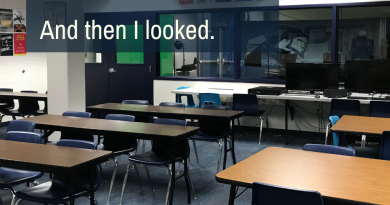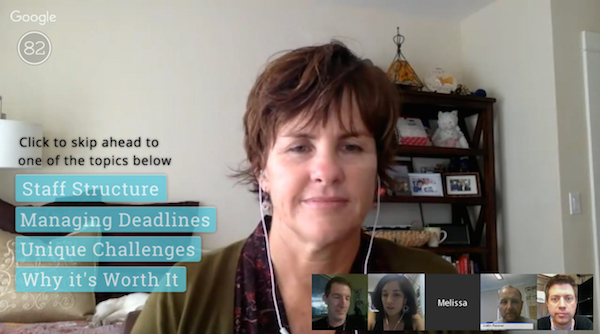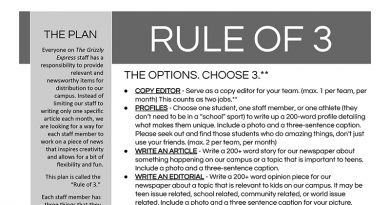Rethink Grading…Again

I’ve been advising journalism for over two decades, and I am still in search of the perfect grading system. Whenever someone puts something out there, I feel compelled to give it a try – especially given that whatever I have falls short in some way or another.
You name it, I’ve tried it. But if the pandemic has taught me anything, it is this: there is no perfect system. We’ve been remote since last March, so I am unable to see my students working, to have side conversations with them – with the exception of putting them all in individual zoom rooms and then bouncing around to do individual conferences, which is something that I think works fine once in a while, but not as a typical class. I want my students to see and interact with each other, and sticking them in individual rooms with me jumping in for a couple of minutes at most doesn’t bring the feel of togetherness that I think we need right now. My point is that it is hard to know what kids are doing, how long it’s taking them, etc.,
My main problem with previous plans was that they did not account for time. For example, one of my choices was to do an IGTV post for social media. For some kids, that is an hour long assignment. For other kids, especially my new kids who have never done a video, that could take triple the amount of time. I have been treating assignments as equal between students who are 17-year-old students in their 7th semester and my new 14-year-old students in their first semester.
So, here is my new plan: work is based on time, and reflection is an integral part of the assignment. I was talking to a student the other day who had missed two big 100-point deadlines. When I asked him why, he said that he had been working on a video and he had nine hours into it, but it still wasn’t done. It was his first time doing a video, and he was so proud of himself. That’s the moment I knew that my grading needed to change again.
I have a list of choices that students can do with models, but they can also deviate from that and “choose their own adventure.” At the heart of the work, I want students interviewing and connecting with other people and then writing articles/creating work that matters to them and has a place in our world.
Some weeks we end up doing more class assignments or projects. For example, we’ve been practicing with remote photography, interviewing each other and creating theme-based social media posts. I create those assignments based on requests from my editors for certain work from students or based on what I think our group needs at that moment. Sometimes it goes the grammar route and other times we step back and take time to get to know each other better.
When I have work come in that is individually based, I am now basing it on time. For example, recently I gave students 10 days to do four hours of work. Most of them end up doing more than four hours, but four hours is the amount that my diverse range of students can handle. You have to figure out what number makes sense with your group of students. And, it’s not that I do this every 10 days. Sometimes I do three hours in a week, and I give them some class time to work on it. It all depends on what they need and what our publications need. But, having a system that is flexible and determined by me allows me to ebb and flow a bit more with our production schedule and what is going on with my students.
At our school, it seems like there are weeks where the workload is heavy on students across all of their courses. When that happens and I see them faltering a bit, I can back off of our work. In the past, my systems have been rigid: a certain number of assignments every week or every other week. And, then instead of being flexible and thinking week by week about what my students need then, I felt tied into a system that we had to stick with.
In the new system, the students fill out the following information about their work:
- Your name:
- How are you doing?
- Link to your work:
- Is it in process or finished?:
- Tell me about your work. Why does it matter? Why did you do it? How do you feel about it?
- Tell me about your process: What was your process? What did you learn? What would you do the same? What would you do differently?
- How many hours did you spend working on this?
- I need to put a letter grade on this. What do you think you deserve? Why?
- Is there anything else that you want to share with me? Is there anything (inside or outside of class) that I can help you with?
When things get going in production mode, one of the first things that I let go is the reflection part, and that is a mistake that I have made over and over again. This reflection part is essential to their learning process and to my grading process. Without the reflection, I don’t know that my student spent nine hours learning how to create a video, that my student did over 20 hours of interviews for a 750-word article, or that my student spend five hours designing their first page, etc., The work is only part of the story — the reflection gets me closer to the whole story and gives me a chance to better understand my student and their work.





